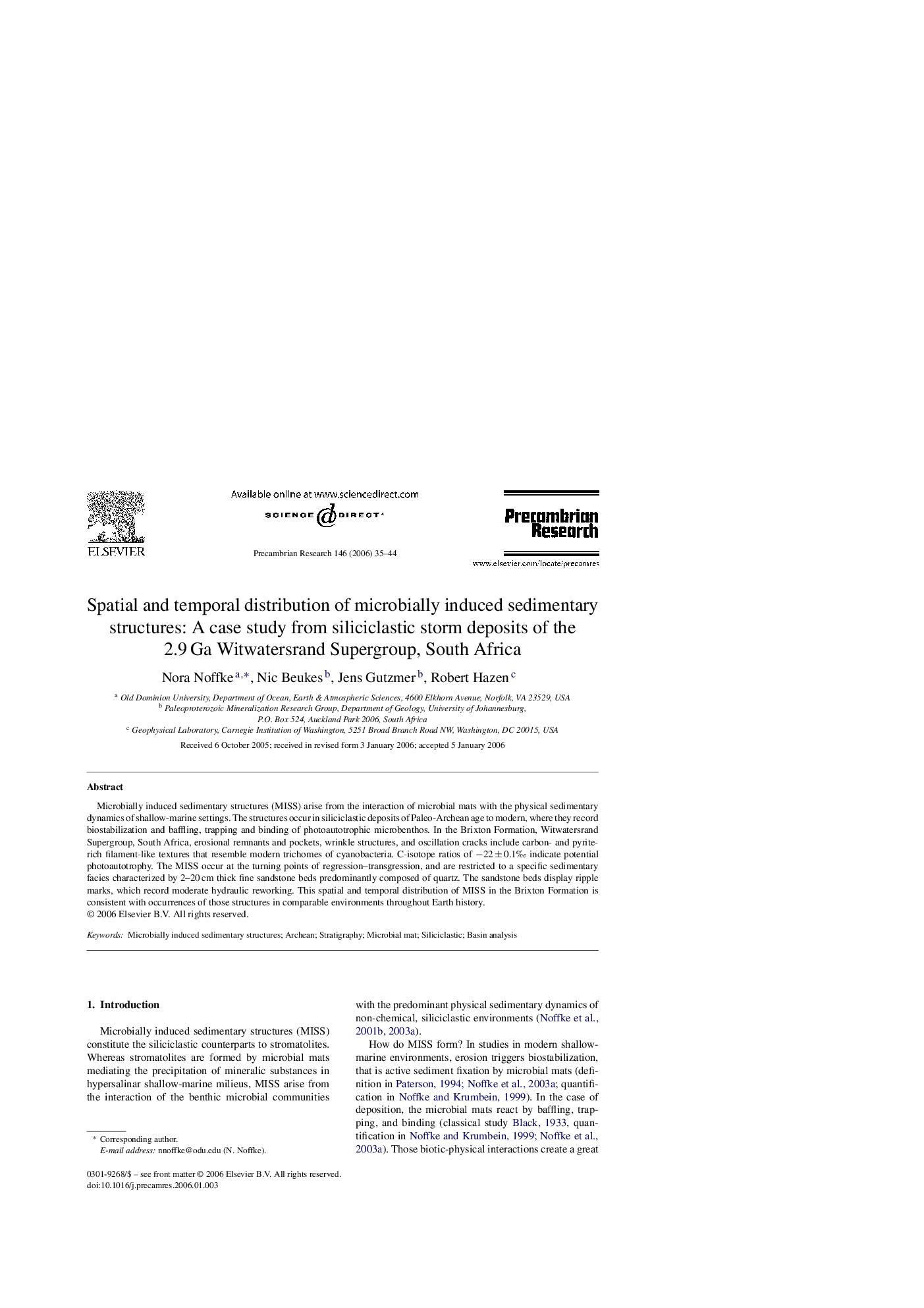| کد مقاله | کد نشریه | سال انتشار | مقاله انگلیسی | نسخه تمام متن |
|---|---|---|---|---|
| 4724573 | 1639737 | 2006 | 10 صفحه PDF | دانلود رایگان |

Microbially induced sedimentary structures (MISS) arise from the interaction of microbial mats with the physical sedimentary dynamics of shallow-marine settings. The structures occur in siliciclastic deposits of Paleo-Archean age to modern, where they record biostabilization and baffling, trapping and binding of photoautotrophic microbenthos. In the Brixton Formation, Witwatersrand Supergroup, South Africa, erosional remnants and pockets, wrinkle structures, and oscillation cracks include carbon- and pyrite-rich filament-like textures that resemble modern trichomes of cyanobacteria. C-isotope ratios of −22 ± 0.1‰ indicate potential photoautotrophy. The MISS occur at the turning points of regression–transgression, and are restricted to a specific sedimentary facies characterized by 2–20 cm thick fine sandstone beds predominantly composed of quartz. The sandstone beds display ripple marks, which record moderate hydraulic reworking. This spatial and temporal distribution of MISS in the Brixton Formation is consistent with occurrences of those structures in comparable environments throughout Earth history.
Journal: Precambrian Research - Volume 146, Issues 1–2, 20 April 2006, Pages 35–44